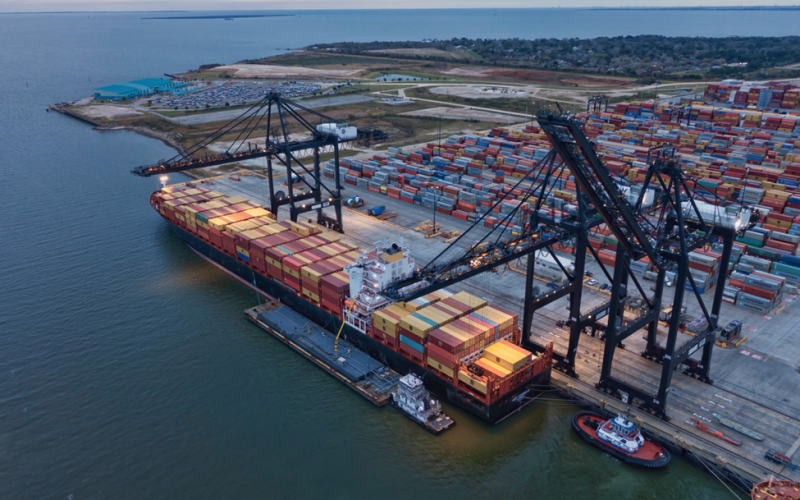As part of the United States' long-term strategy to reach net-zero greenhouse gas emissions by 2050, big changes are on the horizon for U.S. ports.
Reducing emissions from diesel engines is a major part of this initiative, which will require changes and innovation but at a hefty cost. Within the next decade, the American Association of Port Authorities (AAPA) projects that U.S. ports will build $50 billion in green infrastructure.
Working in tandem with the federal government, the AAPA has launched the POWERS Program to maximize green energy investments and direct sustainability initiatives. The POWERS Program advocates for five major areas of need: alternative fuels, offshore wind, port electrification, U.S. energy exports, and port resiliency.
One way to catalyze decarbonization while simultaneously bolstering energy security is to utilize alternative fuels. Methanol, hydrogen, liquid natural gas (LNG), propane, and ammonia are being introduced to both land and sea vessels. Though cleaner, each alternative fuel comes with its own pros and cons.
Ammonia is being positioned as a zero-carbon alternative since it emits no carbon dioxide when burned. This inorganic compound is readily available, and it can be artificially created using renewable energy sources like wind and solar, designating the fuel type “green.” Ammonia’s density is also much more favorable than hydrogen's. It will be cheaper than other alternatives, and it has long-term scalability, the AAPA said.
The drawbacks of using ammonia as a fuel are its toxicity, it is easily flammable, and it’s highly corrosive. If a leak occurs at sea, both humans and aquatic life would be at risk. Other downsides include high production start-up costs and no vessels of any size are currently equipped to utilize the fuel. Despite this, 58% of ports have started looking into the use of alternative fuels in their vessels, AAPA said.
Ports will play a major role in how alternative energy developments related to wind turbines and offshore equipment take shape. More wind projects will lead to job creation within these port communities. As planning for U.S. offshore wind projects becomes more advanced, ports and municipalities are becoming increasingly aware of the opportunities that are and will be in front of them.
While the electrification of U.S. ports represents a major change for the industry, it’s already in progress. A recent AAPA study said that 63% of participating ports have already completed projects to electrify terminal equipment and fleet vehicles. This transformation is being supported as part of the Inflation Reduction Act of 2022, which plans to award $3 billion in grants intended for electrification and emissions reduction over the next five years. The legislation will also support microgrid installations and electric vehicles, and local power generation to enhance the electric infrastructure of ports.
The costs will be high. AAPA estimates the median cost of electrification will be around $100 million per port. Government aid needs to be provided, which is part of the reason the AAPA is working with policymakers to include ports in the National Electric Vehicle Charging Plan, which will help address some of these costs while also leading to cleaner air and communities.
The Inflation Reduction Act is indicative of today’s political climate, which amplifies the geostrategic importance around domestic energy production. There is a growing demand for domestic energy exports. Exporting fuels such as ethanol, LNG, and biodiesel will help strengthen U.S. ports in the long term, AAPA said.
The final pillar addressed by the POWERS Program are natural and technological threats that ports face. The waterfront location of ports makes them more susceptible to extreme weather events, threatening their operations and threatening the global supply chain. Government financial assistance will increase supply chain resilience through FEMA’s BRIC Program (Building Resilient Infrastructure and Communities), which plans to implement hazard mitigation projects.
A recent AAPA survey indicates that U.S. ports are actively pursuing new means to cut their emissions and increase resiliency, with 75% of port authorities already having environmental service departments in place while 72% designate these environmental departments among executive leadership.
Despite this recognition, the challenges associated with cost and the domestic supply chain are significant. With 83% of port authorities finding it difficult to source green-build equipment and materials from U.S. manufacturers, some green infrastructure projects cannot even make it past the planning phase.




